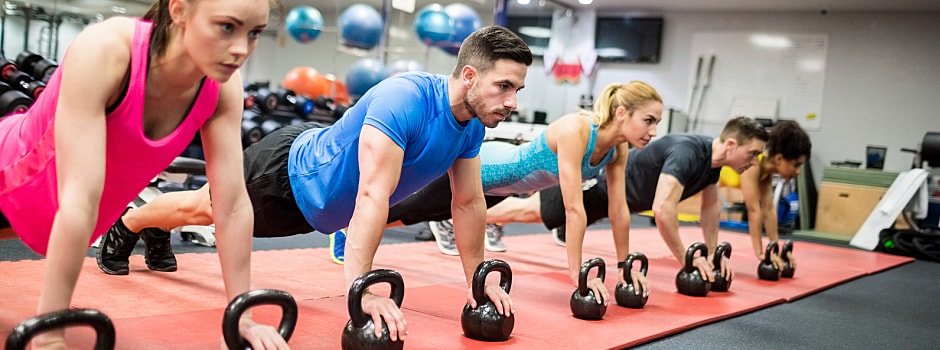Strength tools like the kettlebell have been used for hundreds of years to build muscle and burn away layers of stubborn fat. However, unlike other fitness tools, like barbells, dumbbells, and expensive weight machines, the benefits of kettlebells include boosting both your strength and cardiovascular endurance. Here's what else you should know about this popular fitness tool.
History of the Kettlebell
The Russian word for kettlebell ("girya") first appeared in Russian literature in 1704 when it was used as a counterweight on scales. It then started being used as a more mainstream exercise tool in the late 1990s. Today, it's one of the most popular exercise tools available for getting a better workout in the shortest amount of time, and it now has fitness fans worldwide.
The Ultimate Functional Fitness Tool
The philosophy behind functional fitness is that it encourages exercise in a way that assists with, and boosts, the performance of everyday activities. Functional fitness involves pushing and pulling weight in a biomechanically natural movement pattern, with multiple muscles in the body needing to work to control movement. So a kettlebell deadlift, for example, is very similar to picking up an off-centered, heavy bag, and a kettlebell swing is both a lift and powerful toss linked together. Kettlebells are especially conducive to these functional movement patterns, and kettlebell training can lead to performing everyday tasks and other fitness feats more easily.
Why It Builds More Muscle
Isolation movements (when you lift things up and put things down in a strict range of motion), don't always push you hard enough. On the other hand, the multijoint, multidimensional exercises that you're forced to do with the oddly shaped kettlebell will naturally recruit more of your muscles, according to Muscle & Fitness. Here's why: the center mass of a kettlebell isn't right in your hand like when you hold a dumbbell. Instead, it's on the outside of, top of, or below your hand, depending on how you're holding it. That orientation will change throughout a single repetition, and to compensate, you'll be forced to perform more multijoint, full-body dynamic movements to keep the weight under control. You can burn up to 400 calories in just 20 minutes with an all-out kettlebell workout, which is similar to running a six-minute mile.
Cardiovascular Health Benefits
By performing more powerful, dynamic kettlebell exercises, you'll be able to boost your cardiovascular conditioning, or your body's ability to pump blood quickly and deliver oxygen to your muscles. Those fast kettlebell workouts also boost your endurance, or your body's ability to repeatedly perform fast, forceful movements, according to Men's Health.
6 Essential Kettlebell Exercises
So what are the best kettlebell exercises? Here are six popular moves to try:
- Kettlebell swing
- Goblet squat
- Turkish getup
- Strict press
- Clean
- Snatch
Full-Body Kettlebell Tabata HIIT Workout
If you want a full kettlebell workout, here's a routine you can either add to the end of your workout, build into your exercise regimen, or do on its own.
- Start by choosing a weight that you can handle for 12 repetitions, without rest time. Keep in mind that you should still feel challenged.
- Warm up with air squats, arm circles, and side lunges for about five minutes.
- Complete a kettlebell swing for 20 seconds, rest for 10 seconds, and repeat four to eight times.
- Rest for up to a minute.
- Complete a kettlebell goblet squat for 20 seconds, rest for 10 seconds, and repeat four to eight times.
- Rest for up to a minute.
- Complete a kettlebell single-leg deadlift for 20 seconds, rest for 10 seconds, and repeat four to eight times.
- Cool down by stretching for five minutes.
You've probably heard of kettlebells, but now you have the tools and knowledge on how—and why—to incorporate them into your workout routine. Use these tips and your body will soon be reaping the benefits.
Related Articles

How to Break Through a Workout Plateau: 5 Tips to Help You Succeed
Have you hit a workout plateau? Here are five reasons why you may have dipped into a workout plateau and what to do instead.

When Is the Best Time to Work Out?
A lot of factors, including how intensely your exercise session will be, can help you decide when the best time to work out is. Here are some tips.

Boot Camp Workout 101: What You Should Know
Here's just about everything you should know before jumping into your first boot camp workout.
